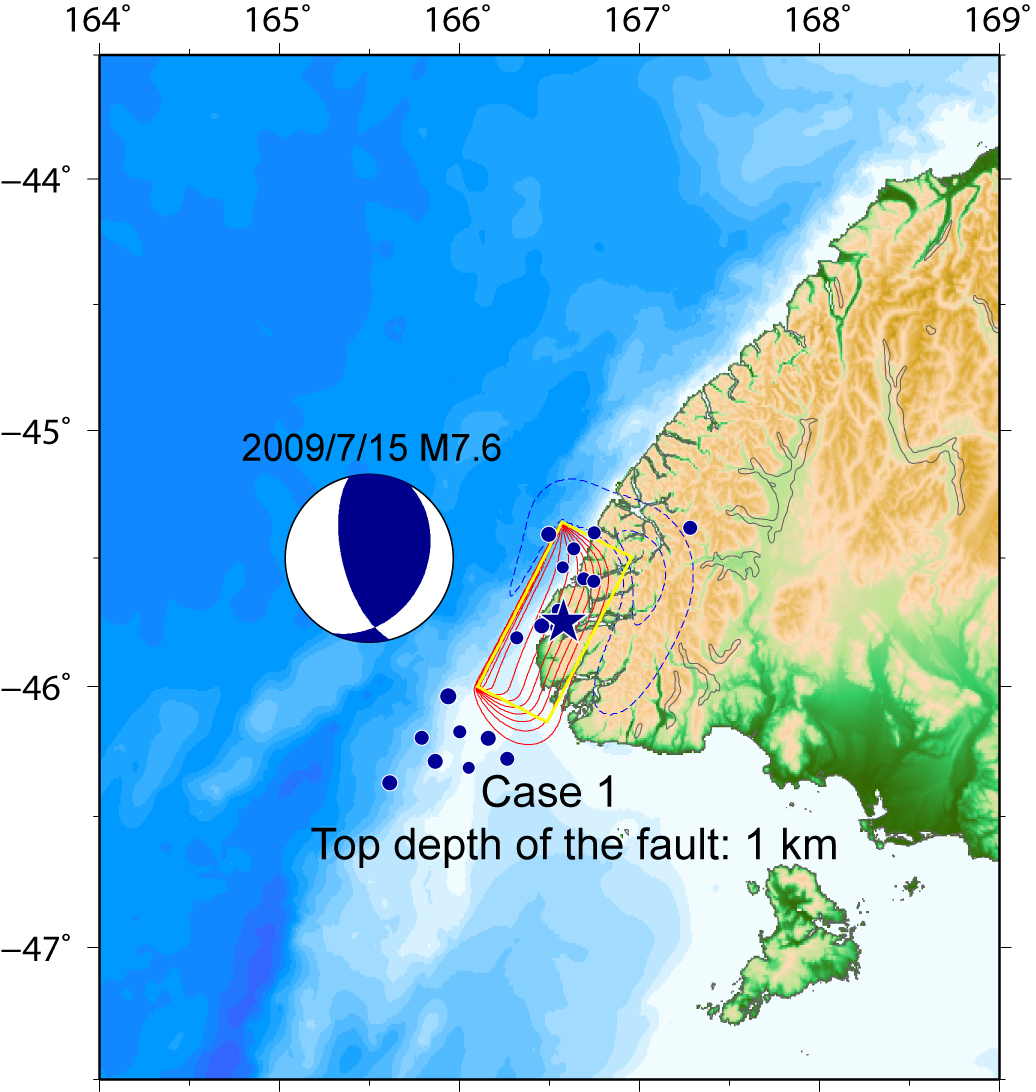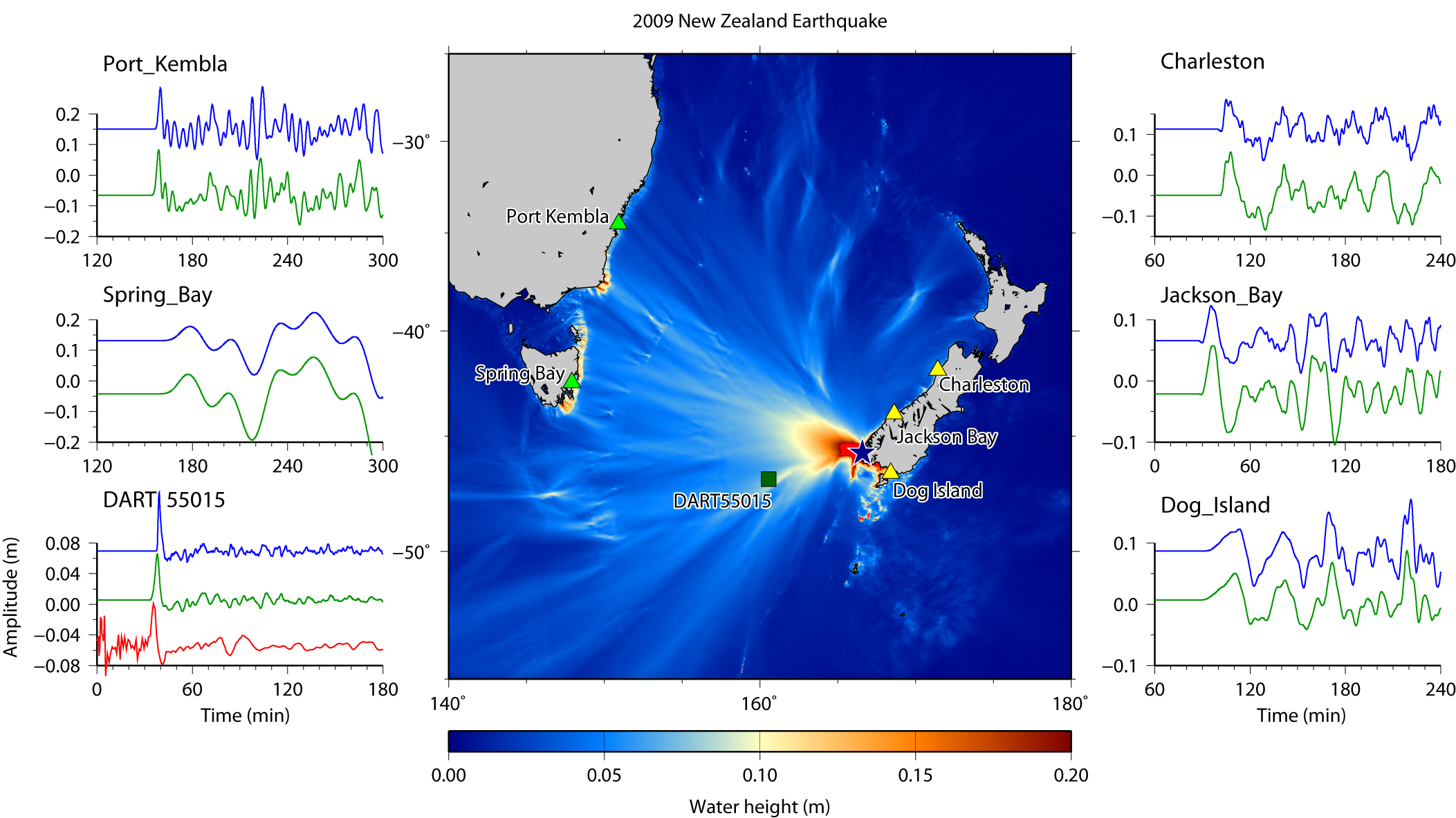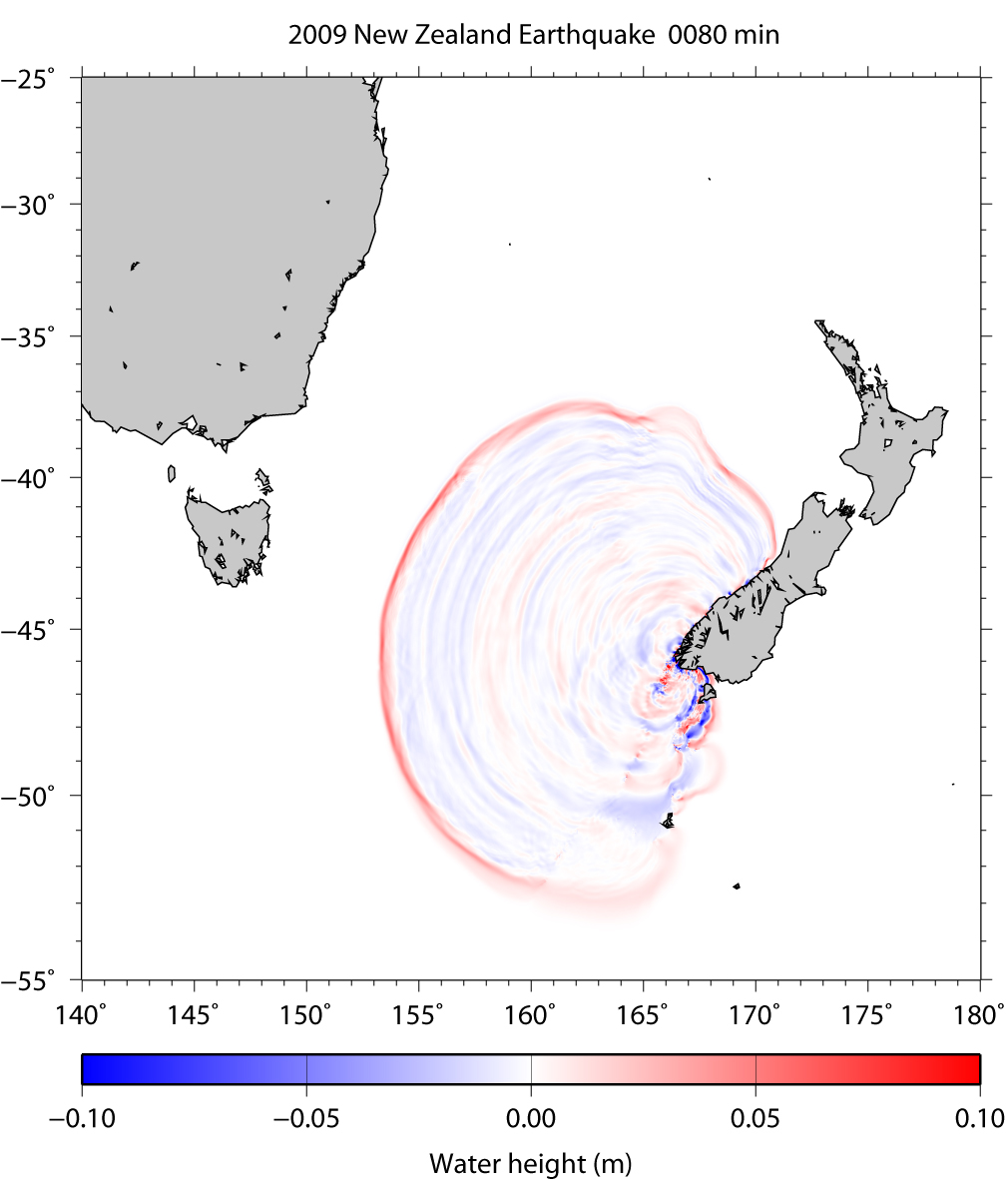| South Island, New Zealand Tsunami on July 15, 2009 |
We have simulated the tsunami generated from the the South Island, New Zealand earthquake (45.750°S, 166.577°E, Mw = 7.6 at 09:22:29 UTC according to USGS) on July 15, 2009. The assumed tsunami source is located within the aftershock area during one day after the mainshock (Fig. 1). The fault sizes are 80 km × 40 km. Top depths of the fault are 1 km (Case 1) and 10 km (Case 2). The focal mechanism is strike=27º, dip angle =33º and slip angle= 126º from the USGS's CMT solution. Average slip on the fault is 2 m. As the initial condition for tsunami, static deformation of the seafloor is calculated for a rectangular fault model [Okada, 1985] using the source model. The used bathymetry data is GEBCO_08 30 arc-second grid data. To calculate tsunami propagation, the linear shallow-water, or long-wave, equations were numerically solved by finite-difference method [Satake, 1995]. The maximum heights of simulated tsunami indicate that the tsunami energy is concentrating to directions perpendicular to the strike of fault (Fig. 2). We have downloaded the DART data from NOAA's web site and compared the simulated tsunami waveform and observed one (Fig. 2). We can see the tsunami propagation to the east coast of Australia (Fig. 3).


Fig.1 Tsunami Source Models
The red contours indicate uplift with the contour interval of 0.1 m, while the blue contours indicate subsidence with the contour interval of 0.05 m.

Fig.2 Maximum Height of Computed Tsunami
Solid lines in red indicates the observed tsunami waveform. Solid lines in blue and green indicate the synthtic ones in Case 1 and Case 2, respectively.

Fig.3 Tsunami Propagation (Click to start animation)
The red color means that the water surface is higher than normal sea level, while the blue means lower.
| by Yushiro Fujii (IISEE, BRI) and Kenji Satake (ERI, Univ. of Tokyo) |
|
|
| References |
|
Okada, Y. (1985), Surface Deformation Due to Shear and Tensile Faults in a Half-Space, Bull. Seismol. Soc. Am., 75, 1135-1154. Satake, K. (1995), Linear and Nonlinear Computations of the 1992 Nicaragua Earthquake Tsunami, Pure and Appl. Geophys., 144, 455-470. |
Last Updated on 2009/7/17